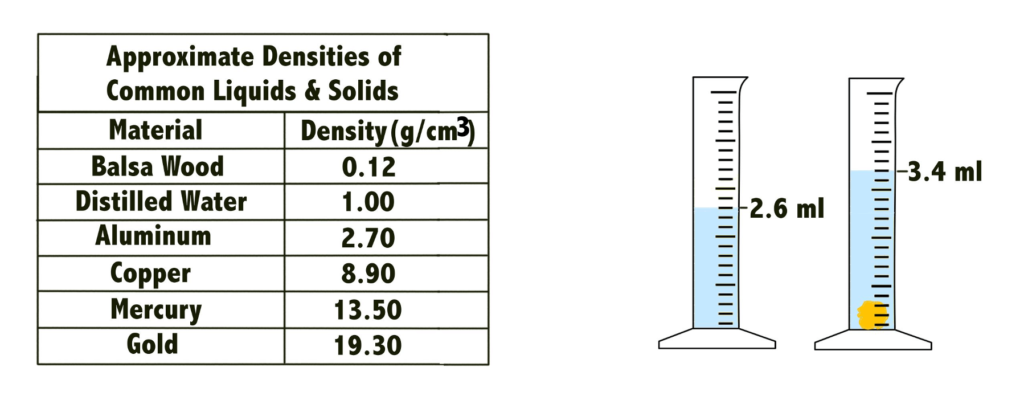Oooooo, this is going to be a good topic… let’s talk about data-driven instruction today!
So, data-driven instruction is a hot topic in education circles these days, and rightly so. In short, data-driven instruction is taking a measuring stick to your lessons as a teacher and determining if they’ve been effective at producing the student results you intended.
Now, having said that, let’s pause for a moment. Because it’s important to recognize that, as teachers, it’s really humbling to journey into data-driven instruction. Every day in the classroom, we go in and pour our blood, sweat, and tears into our lessons and our kids. We care so much. We do so much. And we give so much. And it can be disheartening when we look at our kids’ data and don’t see the measurable progress we expected. It’s tough, and it’s a lot to take in.
So, I want to take a moment to preface this post by saying let’s please be kind to ourselves. Being a teacher is not easy. And just the fact that you show up every day for your students, care, and give it your all, that’s what truly matters in the end. And it’s what students will remember most about you.
Now, with that being said, let’s find some ways to make your life easier as a teacher. Let’s talk about data-driven instruction and how it can be a super-charged, high-impact tool for you in the classroom!

TIP #1: Align your assessments
So, first off, before we talk about data-driven instruction, we need to discuss what it means to give effective assessments in class. I’ve seen a lot of assessments over the years, and one of the most significant gaps I see in the assessments is that there is little alignment between what students are learning in class and what they are assessed on.

Now, what do I mean by that? Well, let me give you an example…
Let’s say Juan is given homework where he has to practice calculating the density of objects. He sees density problems like:
- A block of unknown material has a mass of 60g and a volume of 15 cm3. What is the density of the unknown material?
Then Juan comes into class on Friday and gets a quiz with density questions on it like this:
- The graduated cylinders below represent the initial and the final volume after a solid was placed in ethanol in the cylinder on the right. The mass of the solid is 15.6g. What is the identity of the mysterious solid?

Now all of a sudden Juan is asked to demonstrate mastery on water displacement, how to manipulate the density equation, and how to apply a table- none of which were skills that Juan was required to do on the homework. So what is Juan going to think? Well, he’s probably going to think, “What’s the point of doing the homework? It certainly doesn’t help me on the quiz!”
So, before we talk about data-driven instruction, it’s important first to make sure we have alignment between our exams, quizzes, and practice problems.
One of the best things you can do for yourself as a teacher is to take your unit exam and pair it with the quizzes you want students to complete throughout the unit. That way, you can ensure your quiz questions are truly aligned and will be an effective tool for gauging whether students are on track for the exam. And if you can even take it a step further, pair those quiz questions with the exit ticket questions at the end of your daily lessons. That way, you can know if students are on track for the quiz each week.
Here is an example of what that could look like. Let’s say we want to teach our students about density.
- Before we even decide what lab/ activity we will use in the classroom, let’s look at the question students will see on the district exam about density.
- Now, let’s see if we can create a quiz question to help students prepare for that exam question (without it being a mirror image).
- Next, let’s see what homework question we can write that will align with the quiz question.
- Lastly, I need to pick a lab/ activity in class that will align with the homework practice I’m giving them. Notice how I constantly move backward and keep the end goal in mind!
Aligning your assessments not only helps tailor your instruction to the concepts you’re going to assess, but it also gives your students an incentive to complete their assignments because they see how their assignments directly impact their quiz scores.


TIP #2: Let's find a better way to grade...
Okay, so now that we feel comfortable creating effective assessments, let’s talk about grading…
So, first and foremost, if you haven’t been able to tell from this website, I greatly value practical systems. I want to know the real problems and solutions for any obstacle in my classroom. That means I would not do justice to this post on data-driven instruction if I did not mention the #1 obstacle that keeps teachers from even using data-driven instruction to begin with. And what is that #1 obstacle, you ask? Well… you probably guessed it…
It’s grading!
I think we can all agree, as teachers, that we would happily engage in more data-driven instruction if it were not for that pesky task of grading. Indeed, we don’t need more PDs to convince us that data-driven instruction is essential. We don’t need more evaluations to tell us that it’s a hallmark of effective teaching. As teachers, we just need a more efficient way to grade. And if you can make that happen, then we’re all ears and ready to analyze that data!
So, how do we go about tackling this very real Mount Everest that is grading? Well, first, my friend (and I’m going to stretch you a bit here)… You need to get comfortable with letting students help you with your workload.

Yes, you heard me right. Let students grade their own work. I know it’s hard to do that. I know alllllll the objections that naturally come up.
But I’m holding firm on this.
Making time for students to grade their own work is not only great for you, but it is also great for them. Suddenly, students get to be in the driver’s seat and see firsthand why it is important to be “more clear” with their answers and not write run-on sentences just to “fill up space.” In fact, I can count on both hands the number of times I’ve seen students just give up trying to grade their own work because it is “too hard.” And I’ll admit, between you and me, it’s a lesson I greatly enjoy watching every year
Now, you might be thinking, “Yeah, but Claire, don’t students usually inflate or deflate their grades when they self-grade?” Yes, one might assume that, but the truth is that the majority of students are pretty honest. As for those who aren’t, all it usually takes is an open conversation. There’s no need for shaming; just ask them a few questions, and they’ll likely make the required changes. In the rare instances where students remain resistant to grade adjustments, have them place their work next to a high-quality example. Ask them to make comparisons. It’s essential that students learn how to independently assess their own performance. The more we can help them do that, the better off they will be in the long run.
Now, some things you can do to ensure students stay truthful while self-grading is to…
- Have students grade with a pen.
- Run through the papers ahead of time yourself and highlight any questions the students skipped or left blank (so that they don’t go back and fill it in later).
- Have students underline specific words in their free response questions (that directly align with the answer key) as evidence for getting points for that question.
And remember, even if the grades students come up with aren’t totally in line with your rubric or answer key, that’s okay. Because, at the end of the day, your students’ papers will be so marked up that it suddenly becomes A LOT easier for you to quickly scan through them and decide on the accurate grade.

One last thing about grading, and then I’ll get off my high horse. Every year, I see teachers grade wayyyyyy more than they need to. Cut your grading in half, my teacher friend. In my class, I will definitely collect every piece of student work (as an accountability measure for students). But I hardly even grade a fourth of it! And, believe it or not… students don’t notice. Because as long as students know you are collecting their work, they will be motivated to complete it.
And if students ask that dreaded question, “Is this for points??” Then say something innocuous and abstract that does not answer their question, like, “I will be collecting this, yes.” or “It’s important to do, yes.” Then, promptly walk away.
TIP #3: Use a data tracker to assess your instruction
Alright, so now that you’ve got your grading done (or should I say… students have their grading done!), let’s dive further into data-driven instruction to see how we can get the most out of it in the classroom.
Below is an example template I use to analyze data and determine what reteaching strategies I should prioritize as a teacher. I like the template below because it not only gets to the root of issues but also provides easy, strategic next steps to move forward as a teacher.
Because, I don’t know about you teacher friend, but finding creative ways to reteach concepts WITHOUT staying up late into the night lesson planning and WITHOUT slowing down your curriculum sequence too much- well… let’s just say that’s almost as much of an obstacle as grading!
So, check out the data-driven instruction template below (especially those reteach strategy ideas!) to help you assess your student data AND choose effective and EASY reteach strategies!
To wrap up...
Data-driven instruction takes work, but it is crucial when supporting students in the classroom. Remember- the challenges are real, but so are those high-fives from students acing their learning journey!
I hope this blog has given you a helpful perspective on data-driven instruction. And I hope you’ve found some practical ways you can tailor your instructional practices to become more efficient and effective!

P.S. If you are a first year teacher who is drowning in all the demands at your school, and data-driven instruction is just ONE of a thousand concerns you are juggling right now… Have NO fear because I have a solution for that as well! 
In my FREE “5 Steps to a Masterclass Teacher” guidebook you will find alllllll my best-kept teaching secrets and classroom hacks to put you on the FAST-TRACK for turning around your school year! It’s a step-by-step guide that is guaranteed to have you feeling fired-up, confident, and excited again to being a teacher.
Download the FREE guidebook now to start turning that newbie-teacher frown upside down!

